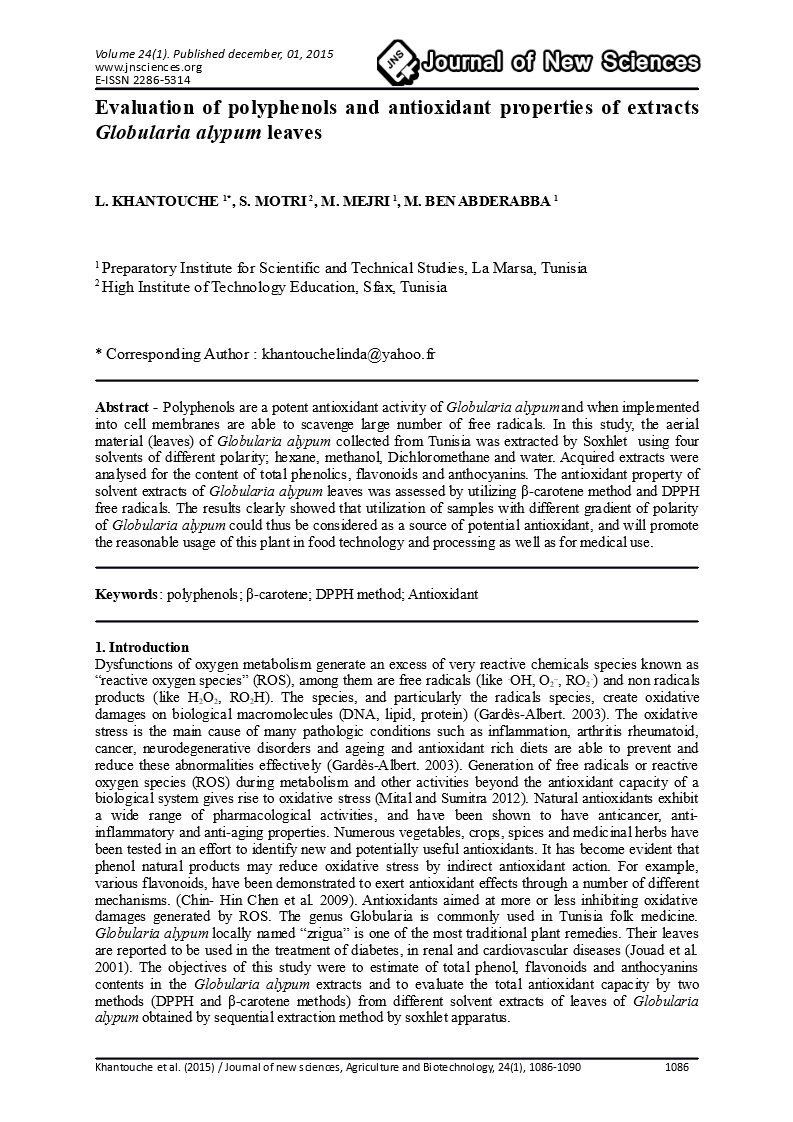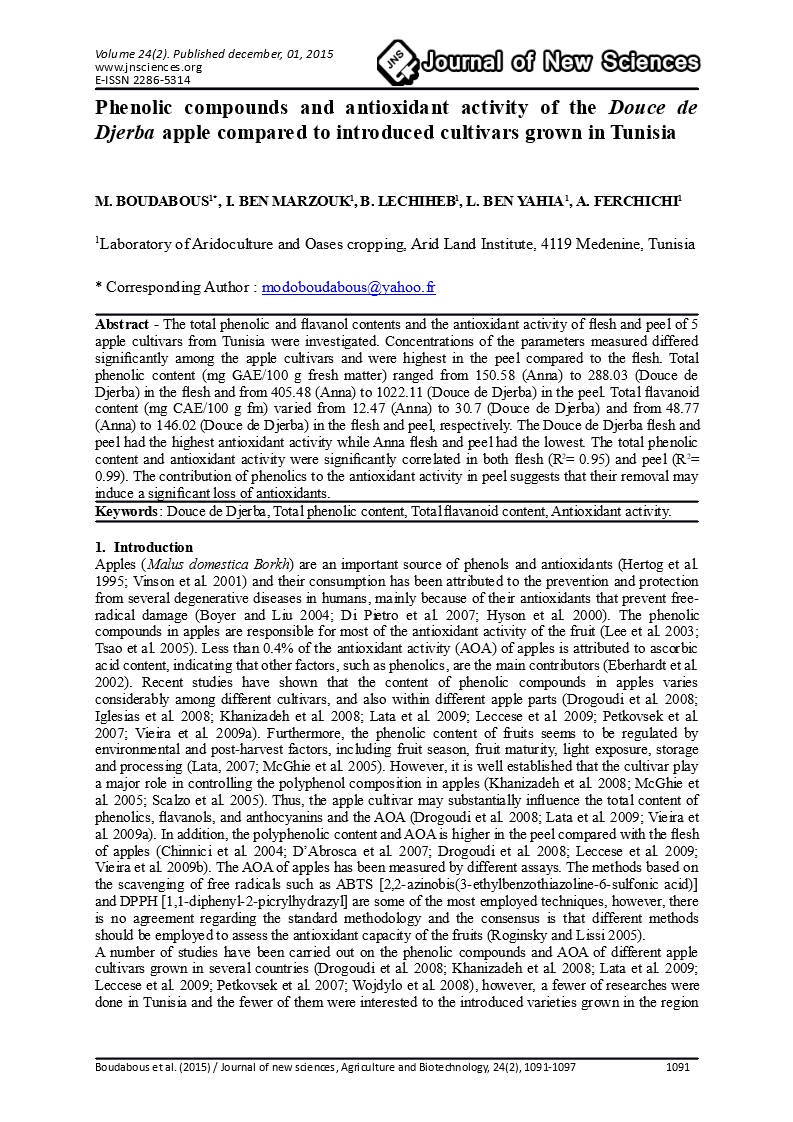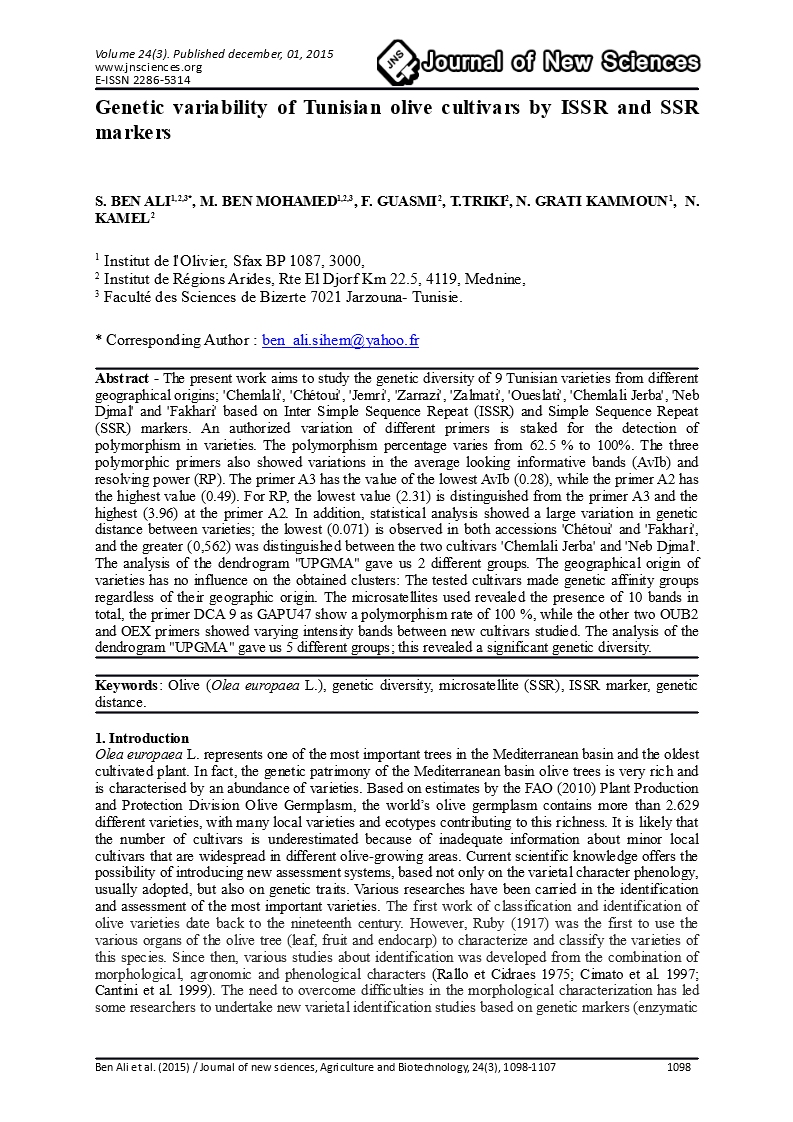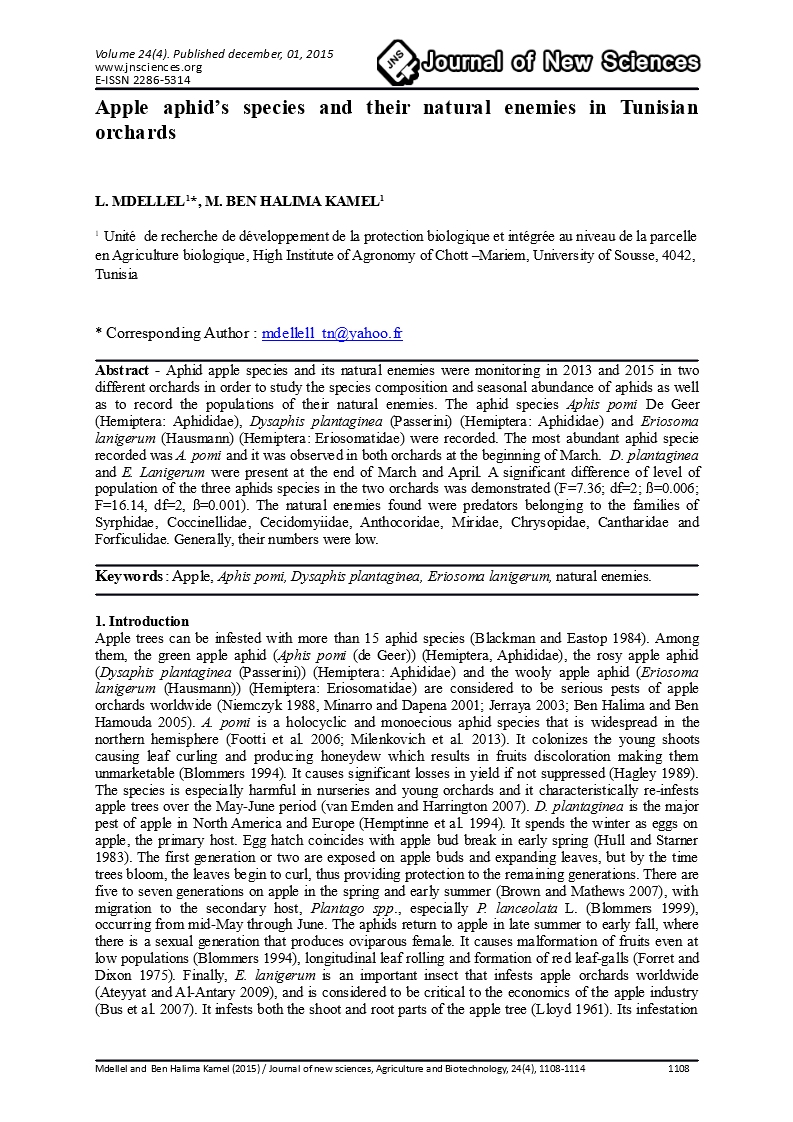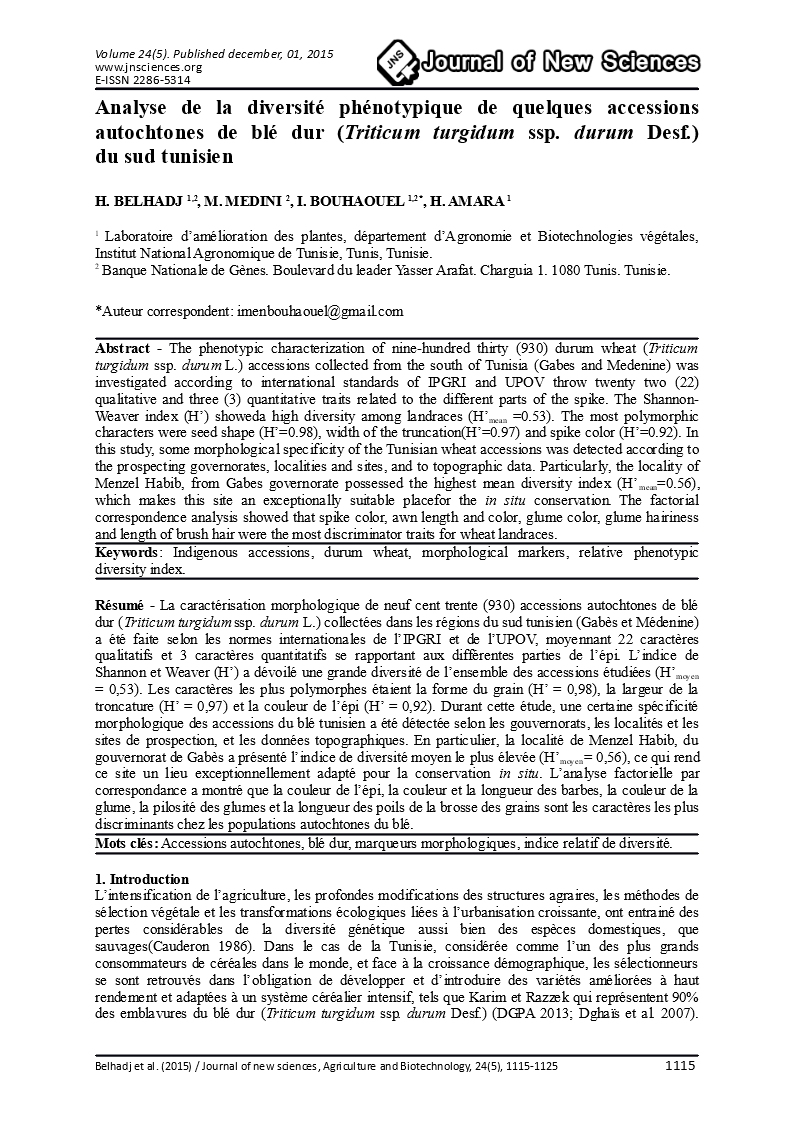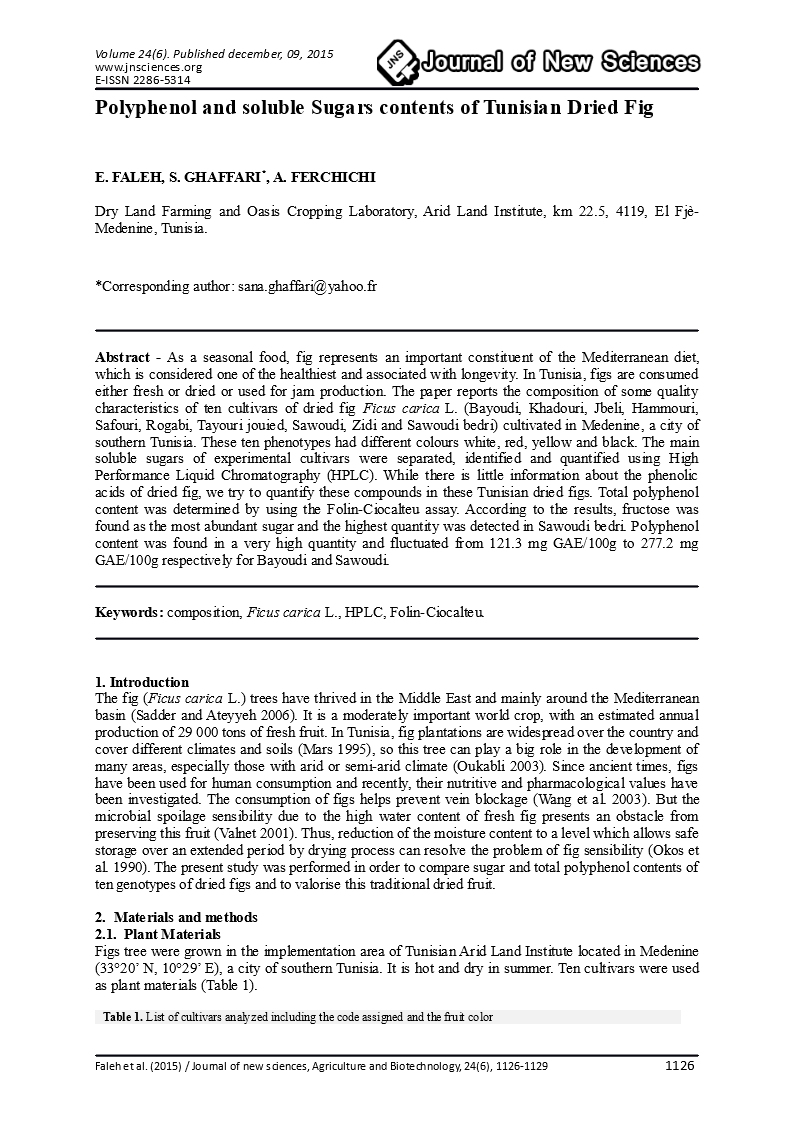H. Belhadj 1,2
M. Medini 2
I. Bouhaouel 1,2*
H. Amara 1
1 Laboratoire d’amélioration des plantes, département d’Agronomie et Biotechnologies végétales, Institut National Agronomique de Tunisie, Tunis, Tunisie.
2 Banque Nationale de Gènes. Boulevard du leader Yasser Arafat. Charguia 1. 1080 Tunis. Tunisie.
Abstract - The phenotypic characterization of nine-hundred thirty (930) durum wheat (Triticum turgidum ssp. durum L.) accessions collected from the south of Tunisia (Gabes and Medenine) was investigated according to international standards of IPGRI and UPOV throw twenty two (22) qualitative and three (3) quantitative traits related to the different parts of the spike. The Shannon-Weaver index (H’) showeda high diversity among landraces (H’mean =0.53). The most polymorphic characters were seed shape (H’=0.98), width of the truncation(H’=0.97) and spike color (H’=0.92). In this study, some morphological specificity of the Tunisian wheat accessions was detected according to the prospecting governorates, localities and sites, and to topographic data. Particularly, the locality of Menzel Habib, from Gabes governorate possessed the highest mean diversity index (H’mean=0.56), which makes this site an exceptionally suitable placefor the in situ conservation. The factorial correspondence analysis showed that spike color, awn length and color, glume color, glume hairiness and length of brush hair were the most discriminator traits for wheat landraces.
Keywords: Indigenous accessions, durum wheat, morphological markers, relative phenotypic diversity index.
Résumé - La caractérisation morphologique de neuf cent trente (930) accessions autochtones de blé dur (Triticum turgidum ssp. durum L.) collectées dans les régions du sud tunisien (Gabès et Médenine) a été faite selon les normes internationales de l’IPGRI et de l’UPOV, moyennant 22 caractères qualitatifs et 3 caractères quantitatifs se rapportant aux différentes parties de l’épi. L’indice de Shannon et Weaver (H’) a dévoilé une grande diversité de l’ensemble des accessions étudiées (H’moyen = 0,53). Les caractères les plus polymorphes étaient la forme du grain (H’ = 0,98), la largeur de la troncature (H’ = 0,97) et la couleur de l’épi (H’ = 0,92). Durant cette étude, une certaine spécificité morphologique des accessions du blé tunisien a été détectée selon les gouvernorats, les localités et les sites de prospection, et les données topographiques. En particulier, la localité de Menzel Habib, du gouvernorat de Gabès a présenté l’indice de diversité moyen le plus élevée (H’moyen= 0,56), ce qui rend ce site un lieu exceptionnellement adapté pour la conservation in situ. L’analyse factorielle par correspondance a montré que la couleur de l’épi, la couleur et la longueur des barbes, la couleur de la glume, la pilosité des glumes et la longueur des poils de la brosse des grains sont les caractères les plus discriminants chez les populations autochtones du blé.
Mots clés: Accessions autochtones, blé dur, marqueurs morphologiques, indice relatif de diversité.
Read more
